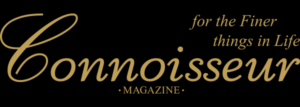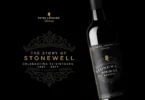Turning from Whisky to Wine
Posted: 1st May 2018
Almost exactly a quarter of a century ago, on 4 May 1993, I was in Milan with Allan Shiach for the launch of the second tranche of the 1926 Macallan sixty-year old malt. Shiach was the major shareholder in the distillery then. As ‘Allan Scott’ he was a great name in the world of films too and he had a flamboyant style that not surprisingly outstripped most of the people in the whisky business. The first batch had been sold off in 1986 at £20,000 a bottle. I tasted the whisky, but I understandably I didn’t get a bottle, cheap as it was in those days! I was given a small lithograph by Valerio Adami of a bald woman instead. This was the prototype for the 1993 label. Allan said the woman in the picture looked like Mrs Thatcher.
We stayed at the Principe di Savoia and I had a jolly time wandering around the streets with the late Michael Jackson, while whisky-mad Italians genuflected at his approach. This, I hasten to add, was not the pop-singing mooncalf Jackson, but the beer and whisky hunter, a genial, paunchy, Jewish Yorkshireman who could not have been more different. I had time to interview Armando Giovinetti, the man who had made so many Italians fall in love with malt – and therefore Michael – and who sold his own hugely popular bottling of seven-year old Macallan on the Italian market. Armando didn’t speak much English, but we managed somehow in a combination of French and Italian (he was the owner of Janneau Armagnac) although he kept referring his favourite whiskies as being ‘morbido’, which I learned meant soft or tender, and not ‘morbid’ at all.
Last week two bottles of this sixty-year old whisky – one from each batch – sold for $600,000 a piece! A lot has happened in the whisky world since I hung up my hat.
There was a time when I was north of the border half a dozen times a year trailing from distillery to distillery from the Lowlands to the Highlands and the Islands. I would meet some strong silent type who managed the distillery, ask him a few questions, receive monosyllabic replies and then after a bacon bap and cup of tea, taste the distillery’s offering. That was two or possibly three bottles: a young age-statement, say eight or ten-year old, and an older one that was fifteen, twenty or twenty five. A bottle of the better whisky was generally slipped into my hand before I left. Sometimes we would wander around the warehouses and nose a few casks. Once or twice I was allowed to dabble my fingers in one. Every now and then there would be an independent bottler’s rendition to taste too. That was above all for the older age-statements which had long since fallen into the hands of Gordon & MacPhail in Elgin or one of the others who mopped up casks that had somehow come adrift from the blending process.
Whisky was in a bad way. There was a whole lake of it out there which they were desperate to foist on the Chinese, the Indians or the Vietnamese. Malt was a drop in the lake. No one took much notice of it. It was there to give its oomph to the proprietary blends of the various whisky companies. Then malt took off. Collectors (a lot of them Russian oligarchs) couldn’t get enough of it. They bought up all the old age-statements, and they bought any new whisky run off into cask as an investment. Very soon there was a dearth of malt, and really no really mature whisky unless you were prepared to pay the earth. Instead collectors had to make do with young malts dressed up with different sorts of ‘finishes’ (oak) to make them marketable. Sherry casks cost the earth now, but there are plenty of redundant wine barrels. The collection of malts that once lined my kitchen (and which I have now drunk), would have been worth thousands at today’s prices.






